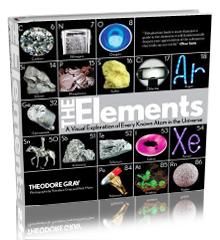Run for your life detector. | |||
| Sample Image | Spin Video | QuickTimeVR Rotation | |||
| Run for your life detector. This is a 1960's era radiation detector whose actual value as a protective device is somewhat questionable. The idea is to shake the detector and build up static charge in the beads, causing them to float. That part works great. If the detector is exposed to a high enough level of ionizing radiation the static charge will be dissipated, and the balls will drop, hence the instructions to seek shelter if the balls drop. I've held this thing up to the strongest sources of radiation I have and the balls don't budge. Granted my radioactive sources are not all that strong, but I think it's safe to say that if you do ever see the balls drop, you should run, not walk, to wherever you think there might be less radiation around. Source: eBay seller geoelectronics Contributor: Theodore Gray Acquired: 23 December, 2007 Text Updated: 23 December, 2007 Price: $20 Size: 4" Purity: 0% | |||
|

